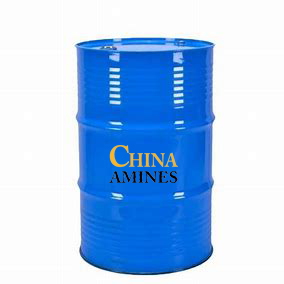1. Chemical Structure and Properties
Molecular Formula: C₂H₂Cl₄
Structural Formula:
Cl₂CH-CHCl₂
A chlorinated hydrocarbon with four chlorine atoms symmetrically bonded to two adjacent carbon atoms.
Physical Properties:
Appearance: Colorless to pale yellow liquid with a sweet, chloroform-like odor.
Boiling Point: 146°C; Density: 1.60 g/cm³; Vapor Pressure: 8 mmHg at 25°C.
Solubility: Slightly soluble in water (0.3 g/L at 20°C); miscible with most organic solvents (ethanol, ether).
Chemical Properties:
Stability: Resists hydrolysis under neutral conditions; decomposes at >200°C to release phosgene (COCl₂) and HCl.
Reactivity: Acts as a solvent for sulfur, phosphorus, and waxes; reacts with strong bases to form dichloroacetylene (explosive).
2. Industrial Applications
Solvent Industry:
Metal Degreasing: Historical use in vapor-phase cleaning of machinery parts (replaced by less toxic alternatives).
Pesticide Formulations: Carrier solvent for chlorinated insecticides (e.g., DDT).
Chemical Synthesis:
Intermediate: Produces trichloroethylene (TCE) and perchloroethylene (PCE) via dehydrochlorination.
Historical Uses:
Aviation Fuel Additive: Anti-knock agent in WWII aircraft fuels (phased out due to toxicity).
3. Safety and Toxicology
Health Hazards:
Acute Exposure:
Inhalation (≥100 ppm): Dizziness, nausea, and CNS depression (TLV-TWA: 5 ppm).
Skin Contact: Causes chemical burns and systemic absorption (rabbit skin LD₅₀: 1,200 mg/kg).
Ingestion: Extremely toxic (oral LD₅₀ rat: 200 mg/kg); liver/kidney failure.
Chronic Effects:
Carcinogenicity: Classified as Group 2A (probable human carcinogen) by IARC.
Neurotoxicity: Peripheral neuropathy and cognitive deficits in occupational exposure.
Protection Measures:
PPE: Chemical-resistant gloves (e.g., Viton®), full-face respirators, and ventilation.
Antidote: No specific antidote; supportive care for organ damage.
4. Environmental and Regulatory Compliance
Environmental Impact:
Persistence: High (half-life >6 months in soil/water); recalcitrant to biodegradation.
Bioaccumulation: Moderate (log Kow: 2.5); detected in aquatic organisms.
Groundwater Contamination: Common pollutant at industrial sites (e.g., old dry cleaners).
Regulatory Frameworks:
EU:
REACH: Restricted in consumer products (Annex XVII); banned in pesticides since 2009.
CLP: Classified as Carc. 1B (H350), Acute Tox. 2 (H330).
USA:
EPA: Listed as a Hazardous Air Pollutant (HAP); regulated under CERCLA (Reportable Quantity: 10 lbs).
China:
GB 8978-1996: Effluent limit: 0.1 mg/L; strict controls on industrial discharges.
Waste Management:
Incineration: High-temperature (>1,200°C) with HCl scrubbing.
Bioremediation: Limited success; anaerobic degradation to ethylene via dechlorination.
5. Case Studies and Application Insights
Case 1: Superfund Site Cleanup (Love Canal, USA, 1980s):
Issue: Ethylene tetrachloride contamination from abandoned chemical waste.
Remediation: Excavation and incineration of 20,000 tons of soil; cost exceeded $250 million.
Legacy: Catalyzed stricter hazardous waste regulations (RCRA, Superfund Act).
Case 2: Green Solvent Replacement in Aerospace (Boeing, 2015):
Challenge: Eliminate ethylene tetrachloride in composite resin cleaning.
Solution: Adopted bio-based d-limonene and ultrasonic cleaning systems.
Result: Reduced worker exposure risks by 95% and VOC emissions by 70%.
Comparative Analysis:
Ethylene Tetrachloride vs. Trichloroethylene (TCE):
Pros: Higher solvency for heavy greases; slower evaporation.
Cons: Higher toxicity and regulatory restrictions.
Ethylene Tetrachloride vs. Liquid CO₂ Cleaning:
Pros: CO₂ is non-toxic and recyclable; ethylene tetrachloride offers faster degreasing.
Specifications:
Ethylene Tetrachloride is a colorless, volatile liquid with high solvency, used in the production of chlorinated solvents, synthetic rubber, and chemical intermediates, available in bulk from China Amines Co.


